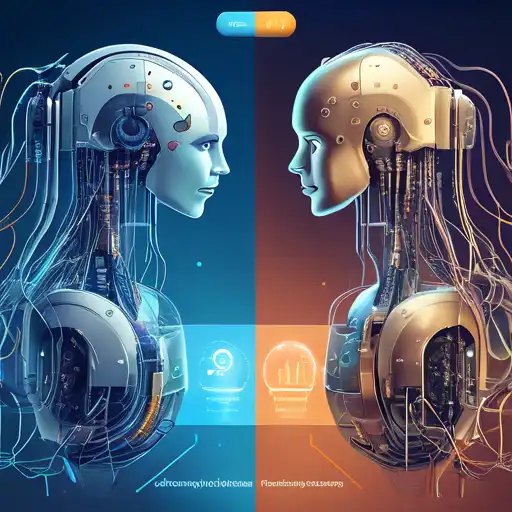Introduction to Machine Learning and Deep Learning
In the realm of artificial intelligence (AI), Machine Learning (ML) and Deep Learning (DL) are two pivotal technologies that drive innovation. While they are often used interchangeably, they possess distinct characteristics and applications. This article delves into the key differences between ML and DL, providing clarity for enthusiasts and professionals alike.
What is Machine Learning?
Machine Learning is a subset of AI that enables systems to learn from data, identify patterns, and make decisions with minimal human intervention. ML algorithms are trained using structured data and can improve their accuracy over time. Common applications include spam detection, recommendation systems, and fraud detection.
What is Deep Learning?
Deep Learning, a more advanced subset of ML, mimics the workings of the human brain in processing data for decision making. DL uses neural networks with several layers (hence 'deep') to analyze vast amounts of unstructured data. Its applications range from voice recognition to autonomous vehicles.
Key Differences Between Machine Learning and Deep Learning
Data Dependency
DL requires significantly larger datasets to perform effectively, whereas ML can work with smaller datasets. This is because DL models need to learn features from the data automatically.
Hardware Requirements
DL models are computationally intensive, often requiring GPUs for processing, while ML models can run on lower-end CPUs.
Feature Engineering
In ML, feature extraction is manual and requires domain expertise. DL automates this process, reducing the need for human intervention.
Interpretability
ML models are generally easier to interpret and explain compared to DL models, which are often considered 'black boxes' due to their complexity.
Choosing Between Machine Learning and Deep Learning
The choice between ML and DL depends on the specific requirements of the project, including the size of the dataset, available computational resources, and the desired level of accuracy. For projects with limited data or resources, ML might be the preferable option. Conversely, DL is suited for complex problems requiring high accuracy, such as image and speech recognition.
Conclusion
Understanding the differences between Machine Learning and Deep Learning is crucial for leveraging the right technology for your AI projects. While ML offers simplicity and efficiency for smaller datasets, DL provides unparalleled accuracy for complex tasks. As AI continues to evolve, the boundaries between these technologies may blur, but their core differences will remain relevant.
For more insights into AI technologies, explore our AI Basics section.
